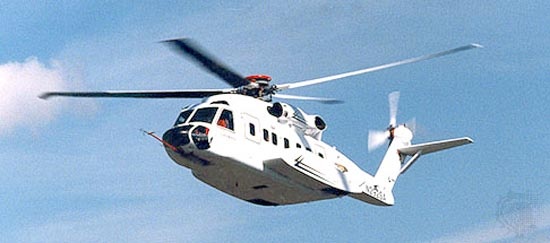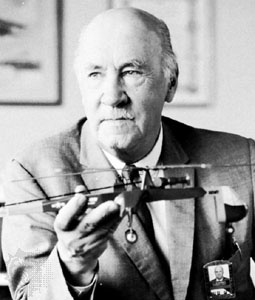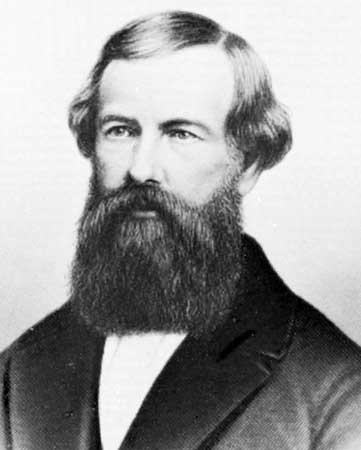United Technologies Corporation
American corporation
American multi-industry company with significant business concentrations in aerospace products and services, including jet engines and helicopters. Formed in 1934 as United Aircraft Corporation, it adopted its present name in 1975. Headquarters are in Hartford, Connecticut.
 UTC incorporates three major aerospace business units—Pratt & Whitney, Sikorsky, and Hamilton Sundstrand. Pratt & Whitney makes turbofan and turboprop engines, liquid- and solid-fuel rocket engines, and industrial gas turbines; it is one of the world's leading builders of large jet engines (jet engine) for commercial and military aircraft and small engines for regional/commuter and business aircraft. Among its products are the PW4000 series of turbofan engines for wide-body commercial aircraft, the PW2000 and PW6000 turbofans for narrow-body jetliners, the V2500 turbofan (as the lead partner in the International Aero Engines 【IAE】 consortium), the F100 and F119 jet fighter engines, and the RL10 and RD-180 rocket engines (the latter in partnership with the Russian rocket maker NPO Energomash) used to power Atlas, Titan, and Delta launchers. Sikorsky is a leading manufacturer of military and commercial helicopters (helicopter). Among its products are the S-76 civil helicopter for corporate, government, offshore-oil, hospital, and airline applications; the UH-60L Black Hawk military transport helicopter; and the H-53 series of helicopters for heavy-lift operations, military transport, and search and rescue. In cooperation with Boeing Company, Sikorsky manufactures the RAH-66 Comanche stealth helicopter for armed reconnaissance, attack, and air combat. Hamilton Sundstrand makes engine and flight controls; propellers; environmental controls for aircraft, spacecraft, and submarines; space life-support systems; fuel cells; and microelectronics.
UTC incorporates three major aerospace business units—Pratt & Whitney, Sikorsky, and Hamilton Sundstrand. Pratt & Whitney makes turbofan and turboprop engines, liquid- and solid-fuel rocket engines, and industrial gas turbines; it is one of the world's leading builders of large jet engines (jet engine) for commercial and military aircraft and small engines for regional/commuter and business aircraft. Among its products are the PW4000 series of turbofan engines for wide-body commercial aircraft, the PW2000 and PW6000 turbofans for narrow-body jetliners, the V2500 turbofan (as the lead partner in the International Aero Engines 【IAE】 consortium), the F100 and F119 jet fighter engines, and the RL10 and RD-180 rocket engines (the latter in partnership with the Russian rocket maker NPO Energomash) used to power Atlas, Titan, and Delta launchers. Sikorsky is a leading manufacturer of military and commercial helicopters (helicopter). Among its products are the S-76 civil helicopter for corporate, government, offshore-oil, hospital, and airline applications; the UH-60L Black Hawk military transport helicopter; and the H-53 series of helicopters for heavy-lift operations, military transport, and search and rescue. In cooperation with Boeing Company, Sikorsky manufactures the RAH-66 Comanche stealth helicopter for armed reconnaissance, attack, and air combat. Hamilton Sundstrand makes engine and flight controls; propellers; environmental controls for aircraft, spacecraft, and submarines; space life-support systems; fuel cells; and microelectronics.UTC's other major units are Otis Elevator Company, which specializes in elevators, escalators, moving walks, and shuttle systems; Carrier Corporation, which makes heating, ventilating, and air-conditioning systems, building controls, and commercial and transport refrigeration equipment; and International Fuel Cells, which makes fuel cells for space and commercial uses. In 2000 UTC employed about 150,000 people, half of which were located outside the United States.
The origin of UTC lies with the company formed in 1928 by William E. Boeing as Boeing Airplane&Transport Corporation, which held controlling interests in Boeing Airplane Company, Boeing Air Transport Inc., and Pacific Air Transport (see Boeing Company). Within a year the company was renamed United Aircraft and Transport Corporation and acquired a number of aircraft- and aircraft-component-manufacturing companies including Sikorsky Aviation, Stearman Aircraft, Avion (later Northrop Aircraft), Chance Vought (aircraft), Hamilton (propellers and aircraft), and Pratt & Whitney (engines). In another two years it consolidated four smaller airlines into United Airlines and made it a subsidiary. In response to legislation prohibiting the affiliation of airlines with aviation manufacturers, United Aircraft and Transport Corporation was dissolved in 1934, resulting in three separate companies. Manufacturing facilities west of the Mississippi River became Boeing Airplane Company, those east of it became United Aircraft Corporation, and all transportation services were unified as United Airlines. United Aircraft Corporation retained, among other companies, Pratt & Whitney, Sikorsky, HamiltonStandard (later Hamilton Sundstrand), and Chance Vought. The first three companies remained core units of United Aircraft and then UTC throughout the rest of the 20th century.
Pratt & Whitney originated as the creation of the businessman Frederick B. Rentschler. In 1925 the machine-tool maker Pratt and Whitney provided Rentschler with start-up funds, idle plant space, and a company name to create an aircraft engine manufacturer. The new company's air-cooled Wasp radial piston engine, completed by the end of that year, proved far superior to the water-cooled engines of the time and became the basis for a number of piston engines and the continued growth of the company in the 1930s and '40s under United Aircraft.
The great demand for Pratt&Whitney piston engines during World War II—more than 360,000 engines were shipped for the wartime effort—diverted the company from early jet-engine development, allowing its competitors General Electric and Westinghouse initially to overtake it in this area. Nevertheless, by the early 1950s Pratt & Whitney had leapfrogged the rest of the industry with its first turbojet design, the J57. About the same time, the close association of the Pratt & Whitney and Vought Aircraft units of United Aircraft began to create conflict-of-interest problems—other engine makers were reluctant to do business with Vought, and other aircraft builders were hesitant to make use of Pratt&Whitney engines. As a result, Vought Aircraft was separated from United Aircraft in 1954.
In 1965 Pratt&Whitney launched a program to develop a more efficient engine for wide-body aircraft. The resulting JT9D turbofan, which introduced many new technologies in structures, aerodynamics, and materials to improve efficiency and reliability, opened a new era in commercial aviation with its application to new versions of Boeing and McDonnell Douglas transports, including the Boeing 747. In 1983 Pratt & Whitney formed IAE with German, British, Italian, and Japanese firms to build the V2500 turbofan for Airbus Industrie jetliners. The V2500 entered service in 1989 on the narrow-body Airbus A320. For military aircraft, Pratt & Whitney developed the F100 engine, which entered service in 1974 with the U.S. Air Force's F-15. It also developed the F119 engine for the stealth fighter design for the U.S. Air Force that became the Lockheed Martin (Lockheed Martin Corporation)/Boeing (Boeing Company) F-22 Raptor (first flown in 1997).
In the 1990s Pratt & Whitney entered a sales-representative and technology-use agreement with NPO Energomash with respect to the latter's rocket engines. The partnership also led to the development of the RD-180 liquid-fuel rocket engine, which was chosen to power Lockheed Martin (Lockheed Martin Corporation)'s Atlas III commercial launch vehicle. The first Russian-powered Atlas III was launched in 2000.
UTC's Hamilton Sundstrand unit has its roots in the formation after World War I of propeller and aircraft companies by Thomas F. Hamilton. When the Hamilton operations were acquired by United Aircraft and Transport Corporation, it was merged with Standard Steel Propeller Company (organized in 1918 as the Dicks-Luttrell Propeller Company by Thomas A. Dicks and James B. Luttrell) to form Hamilton Standard Propeller Corporation. Hamilton Standard became the leading maker of aircraft propellers, producing more than 500,000 during World War II. In 1949 the subsidiary removed Propeller from its name and began to diversify, starting with the development of aircraft fuel controls and satellite control equipment and moving on to life-support systems for the Apollo (Apollo program) Command and Lunar Modules and the space shuttle and space suits for the U.S. space program. Hamilton Sundstrand was formed in June 1999 when UTC merged Hamilton Standard with the newly acquired Sundstrand Corporation. Sundstrand had been formed in 1926 as Sundstrand Machine Tool Company from the merger of a tool company and a milling machine company, both founded in the first decade of the 20th century. By the late 1950s the company was a major supplier of systems and components to commercial and military aircraft manufacturers. Reflecting its expanded range of products, the company name was changed to Sundstrand Corporation in 1959.
 UTC's Sikorsky unit began in 1923 as the independent firm Sikorsky Aero Engineering Corporation, founded by Russian-born aeronautical pioneer Igor Sikorsky (Sikorsky, Igor). Renamed Sikorsky Manufacturing Corporation and later Sikorsky Aviation Corporation before it joined United Aircraft and Transport Corporation, the company built successful amphibian and “flying boat” aircraft in the late 1920s and '30s. In 1939 Sikorsky established its future with the development and flight of the first practical helicopter, the VS-300. The Sikorsky XR-4 (S-47) was delivered to the U.S. Army Air Corps in 1942. The production version, the R-4, became the world's first helicopter built in quantity and served in World War II. In 1978 Sikorsky began delivery of the twin-turboshaft UH-60L Black Hawk military transport helicopter, which became a huge success in the United States and internationally. In the early 1990s Sikorsky, in cooperation with Boeing (Boeing Company), began development of the twin-turboshaft RAH-66 Comanche armed reconnaissance helicopter for the U.S. Army. The first RAH-66 prototype made its maiden flight in 1996.
UTC's Sikorsky unit began in 1923 as the independent firm Sikorsky Aero Engineering Corporation, founded by Russian-born aeronautical pioneer Igor Sikorsky (Sikorsky, Igor). Renamed Sikorsky Manufacturing Corporation and later Sikorsky Aviation Corporation before it joined United Aircraft and Transport Corporation, the company built successful amphibian and “flying boat” aircraft in the late 1920s and '30s. In 1939 Sikorsky established its future with the development and flight of the first practical helicopter, the VS-300. The Sikorsky XR-4 (S-47) was delivered to the U.S. Army Air Corps in 1942. The production version, the R-4, became the world's first helicopter built in quantity and served in World War II. In 1978 Sikorsky began delivery of the twin-turboshaft UH-60L Black Hawk military transport helicopter, which became a huge success in the United States and internationally. In the early 1990s Sikorsky, in cooperation with Boeing (Boeing Company), began development of the twin-turboshaft RAH-66 Comanche armed reconnaissance helicopter for the U.S. Army. The first RAH-66 prototype made its maiden flight in 1996. UTC's Otis and Carrier units were acquired during their parent company's effort in the 1970s to diversify its business and so reduce dependence on sales to the military. In early 1975 United Aircraft adopted the name United Technologies Corporation to reflect this broadening of interests, and later that same year it acquired a stake in Otis Elevator Company. Otis became a wholly owned subsidiary of UTC in 1976. Otis Elevator dates to 1853 when the American inventor Elisha Graves Otis (Otis, Elisha Graves) established a factory to manufacture his new “safety hoist.” In 1979 UTC purchased Carrier Corporation, the world's largest maker of air-conditioning and refrigeration equipment. Carrier was founded in 1915 as Carrier Engineering Company by the American engineer Willis Carrier (Carrier, Willis Haviland), who had designed the first air-conditioning system based on scientific principles in 1902.
UTC's Otis and Carrier units were acquired during their parent company's effort in the 1970s to diversify its business and so reduce dependence on sales to the military. In early 1975 United Aircraft adopted the name United Technologies Corporation to reflect this broadening of interests, and later that same year it acquired a stake in Otis Elevator Company. Otis became a wholly owned subsidiary of UTC in 1976. Otis Elevator dates to 1853 when the American inventor Elisha Graves Otis (Otis, Elisha Graves) established a factory to manufacture his new “safety hoist.” In 1979 UTC purchased Carrier Corporation, the world's largest maker of air-conditioning and refrigeration equipment. Carrier was founded in 1915 as Carrier Engineering Company by the American engineer Willis Carrier (Carrier, Willis Haviland), who had designed the first air-conditioning system based on scientific principles in 1902.